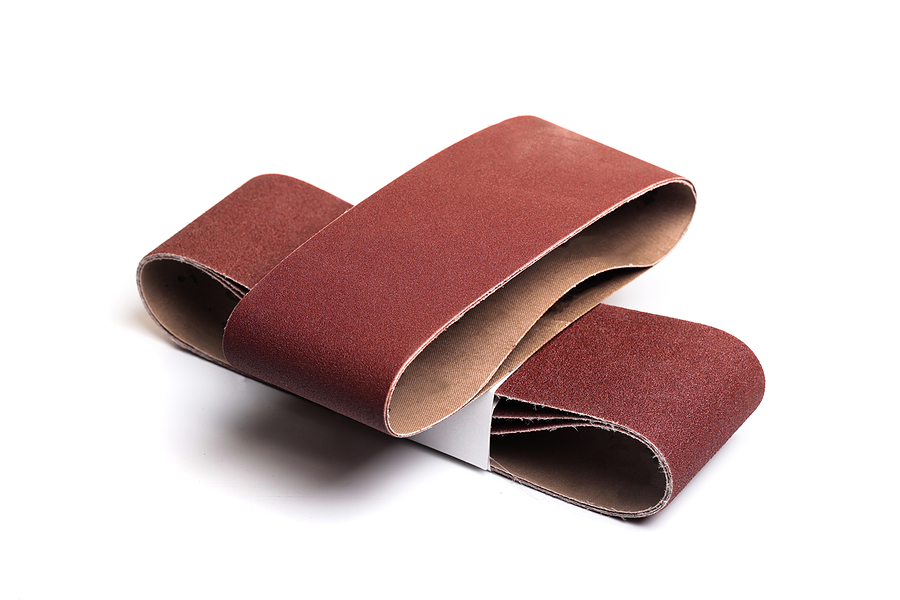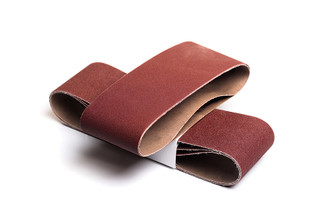Posted by Sandpaper America on Feb 29th 2024
Choosing the Right Wide Sanding Belts: A Comprehensive Guide
Wide sanding belts are the unsung heroes of workshops worldwide, and selecting the correct one can mean the difference between a beautifully finished project and a disappointing outcome. Whether you are a seasoned professional or an enthusiastic DIYer, understanding the nuances of these crucial accessories is paramount.
This guide will walk you through everything you need to know about wide sanding belts, from different materials and grits to choosing the perfect size for your project. By the end, you'll be equipped to make thoughtful, informed decisions when it comes to your sanding needs.

Understanding Wide Sanding Belts
Wide sanding belts come in a variety of materials, and each type is designed for different applications. Here's a breakdown of the essential types you need to be familiar with.
The Types of Wide Sanding Belts
- Aluminum Oxide Belts: These are commonly used for general purpose sanding and are best suited for wood but can also be used on certain metals. They have excellent durability and are a cost-effective option.
- Zirconia Alumina Belts: Offering even greater durability than aluminum oxide, zirconia belts excel in cutting harder materials and are often the go-to choice for metalworking.
- Ceramic Alumina Belts: The most durable option, ceramic belts are ideal for heavy material removal tasks. They're a bit pricier but offer significant longevity and a fast cut rate.
Determining the Right Grit
The grit of the sanding belt refers to the number of abrasive particles per inch of the belt. Lower grit numbers indicate coarser belts, while higher numbers signify finer abrasives. Here are a few pointers on grit selection:
- Coarse Grit (24 - 80): For heavy stock removal, smoothing of rough surfaces, and leveling. This is where you start for tough projects or when you're beginning the sanding process.
- Medium Grit (80 - 120): Balances stock removal with surface finish, making it a good transition between coarse and fine grades.
- Fine Grit (120 - 220): Ideal for final finishing work, preparing surfaces for painting or other finishing, and for light material removal.
Getting the Right Size
It’s important to match the size of your belt to the specific sander you are using. Common sizes include 3x21 inches, 6x48 inches, and 4x24 inches, but wider belts are also available for industrial-sized sanders. Improperly sized belts can cause tracking issues, poor performance, and even damage to your sander.
Factors to Consider When Choosing Wide Sanding Belts
A successful sanding operation is about more than just selecting the grit. Here are some additional factors to keep in mind when choosing wide sanding belts.
Material Compatibility
Different materials work best with specific sanding belt materials. For instance:
- Wood: Generally works well with aluminum oxide belts, but harder woods may benefit from zirconia or ceramic belts for durability.
- Metal: Zirconia or ceramic belts are the top choices for metals considering their hardness and the need for faster cut rates.
Selecting Based on Project Requirements
Each project has its unique demands, so consider:
- The type of material: The hardness and nature of the material being sanded will determine whether you need a more durable belt.
- The finish you desire: A smooth, fine finish will need a high grit belt to remove the fine scratches left by coarser belts.
- The amount of material to be removed: Heavy stock removal benefits from coarse grits, while light sanding and finishing work benefit from finer grits.
Size and Sander Compatibility
Vital to ensure the best results, you should:
- Refer to the sander’s manual: Always check your sander’s user manual for the correct belt size and model recommendations.
- Choose the appropriate width for your project: Wider belts are great for large, flat surfaces, while narrower belts offer more control in smaller, detailed work.
A Quick Word on Sanding Technique
No matter how perfect your belt choice, the technique can make or break the project. Remember to:
- Keep the sander moving: Always move the sander with the grain of the material and keep it in motion to prevent gouging.
- Use even pressure: Apply consistent and even pressure to ensure smooth and uniform results.
- Change belts when necessary: Worn-out belts can slow down the sanding process and affect the quality of the work. Be sure to swap them out for the best results.
Conclusion
Choosing the right wide sanding belts is an art. By understanding the differences in materials, grits, and sizes, you can refine your craft and achieve professional-level results. The right belt for your project can be a game-changer, enhancing not just the quality of your work but also your efficiency and satisfaction.
Head to your workshop with confidence, knowing that with this guide in hand, you’re well on your way to mastering the fine details of sanding—the often overlooked but critical step in creating stunning wood and metal pieces. Remember, sanding is not merely about what you do; it's about how you do it, and it all starts with the right belt.
If you're in Indiana and searching for the highest quality sanding supplies and abrasives, look no further. Call Sandpaper America to order high-quality wide sanding belts at affordable prices. We manufacture all of their sandpaper and abrasive products in-house, so you can trust their quality and dependability. We offer cloth x-weight belts, J-weight belts, zirconia belts, pump sleeves, and more!
Related Posts:
How
to Optimize Your Metalworking with Different Sanding Belts
Tips
for Using a Stationary Belt Sander
Common
Questions Answered About Sanding Belts and Their Usage

